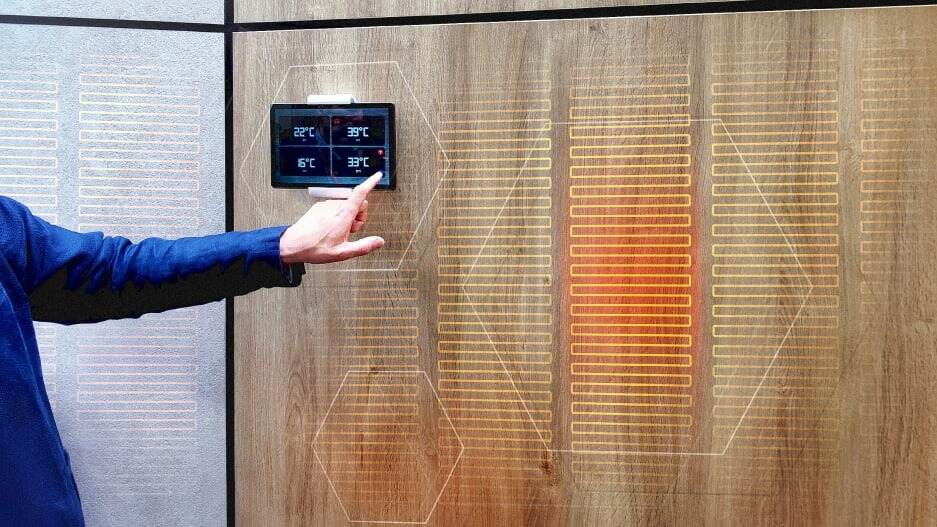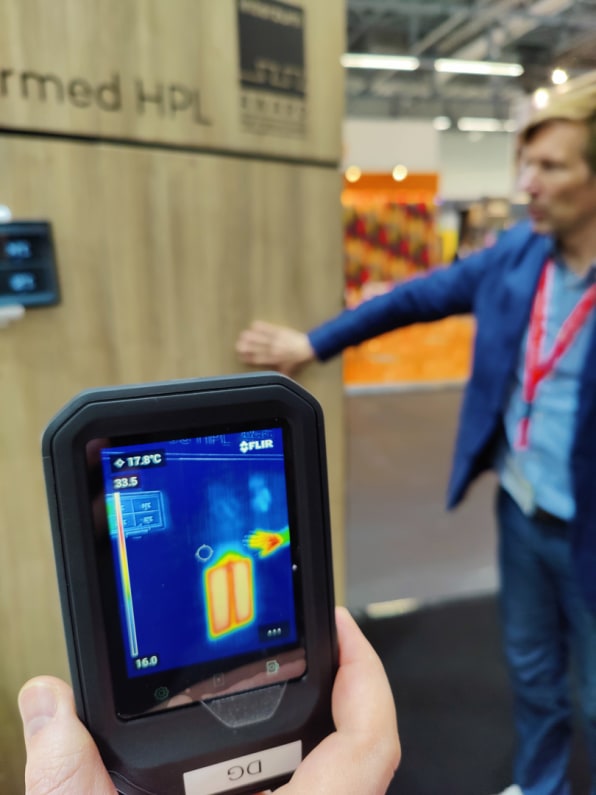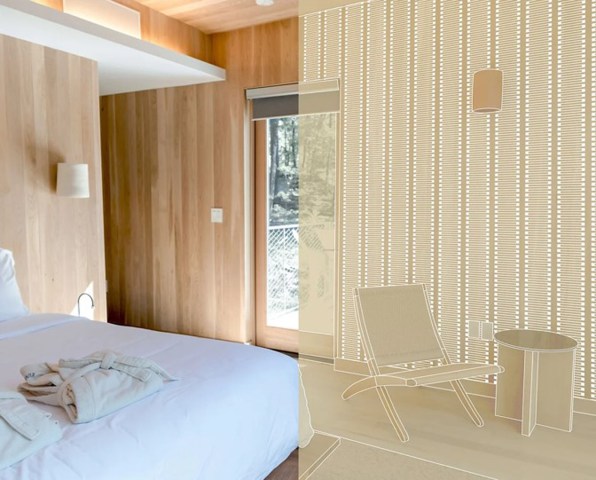- | 9:00 am
This paper-thin tech turns your walls or furniture into an energy-efficient heater
A Finnish startup designed a thin metal mesh that’s hidden inside what looks like an ordinary piece of laminate. But it can heat a room within seconds.

It looks like an ordinary piece of laminate—the same thin layer of wood that you’d find on a dresser or desk or flooring. But hidden inside a new prototype is a paper-thin metal mesh that can turn your furniture or walls into an energy-efficient radiant heater.
The Warming Surfaces Company, the Finnish startup that designed the heating tech, called Halia, spun out of research at Finland’s VTT, a government-owned R&D center. Engineers at VTT have worked on flexible printed electronics for more than two decades. A few years ago, the Finnish military approached the researchers asking for help making military decoys that used heat—by warming up large surfaces, attackers could be fooled into thinking they were looking at a tank or other equipment at night. But as the team worked on the design, they realized it also would be useful for heating homes or offices.

“We started fitting this into furniture and interior surface materials and saw, wow, there’s potential here,” says Jani-Mikael Kuusisto, cofounder of the startup, which launched last fall.
Because the low-voltage heating elements are less than one millimeter (or 1/25th of an inch) thick, they can be embedded in almost any material, including fabric. And because they sit near the surface over large areas, they can heat a space almost instantly. (Each heat “pixel” connects to a central processing unit, which connects to the grid or a battery to run on electric power.) If they’re connected to sensors—either embedded in the material or via a standard home automation system where you can program your preferred temperatures—the heat can come on only when it’s needed.

“Your surroundings sense when you’re in the room, or approaching, and it turns on the temperature to the level that you prefer,” says Kuusisto. “It’s really a fast response. It’s not immediate, like lighting, but we’re talking tens of seconds to reach your desired temperature.”

Like other forms of radiant heating, it can heat a space more evenly than typical forced air systems, without the noise of blowing fans. It also doesn’t take up space (or sit awkwardly on a wall, like some heat pumps).
The company is working with Surforma, a Portugal-based laminate manufacturer, and Grupo Casais, a construction company, to pilot new products that incorporate the technology. One of the first applications is likely to be office furniture, says Kuusisto. Construction pilots will also begin this fall in Portugal.

“The manufacturing has been fully proven,” he says. “Now, it’s a matter of scaling it to the needs of the furniture and construction-materials industry.” Because the technology uses very little material, it should be less expensive to manufacture than other heating tech; it should also cost little to install since it can be incorporated directly into building materials or furniture. The pilots will gather more data about operating cost and performance. In a climate with warmer winters, like Portugal, furniture embedded with the tech could be sufficient to keep an office or room comfortable.
The first products will be on the market by 2024. Kuusisto hopes it can play a role in helping buildings decarbonize. In Europe, he says, nearly two-thirds of energy used by households go to heating.







































